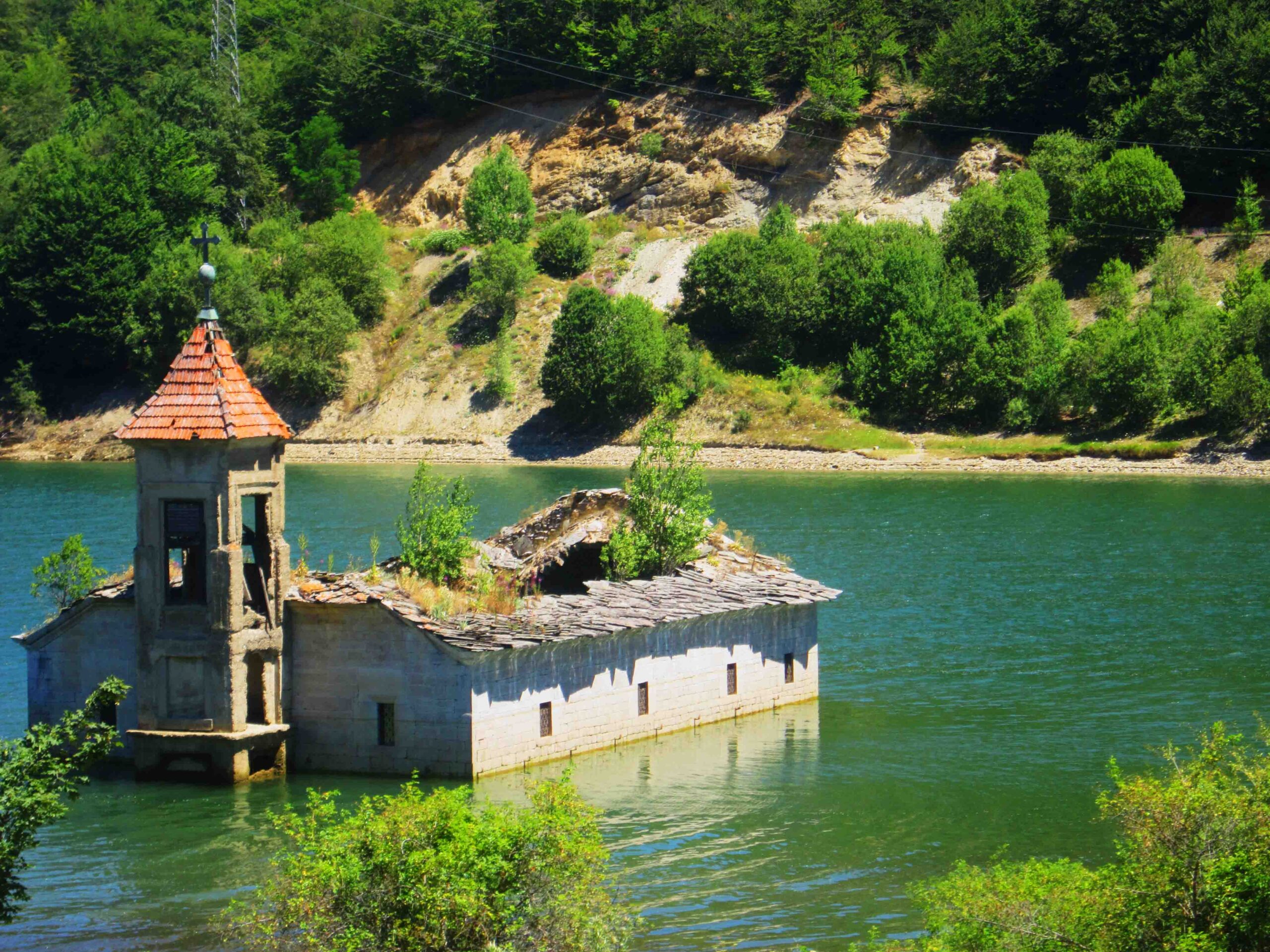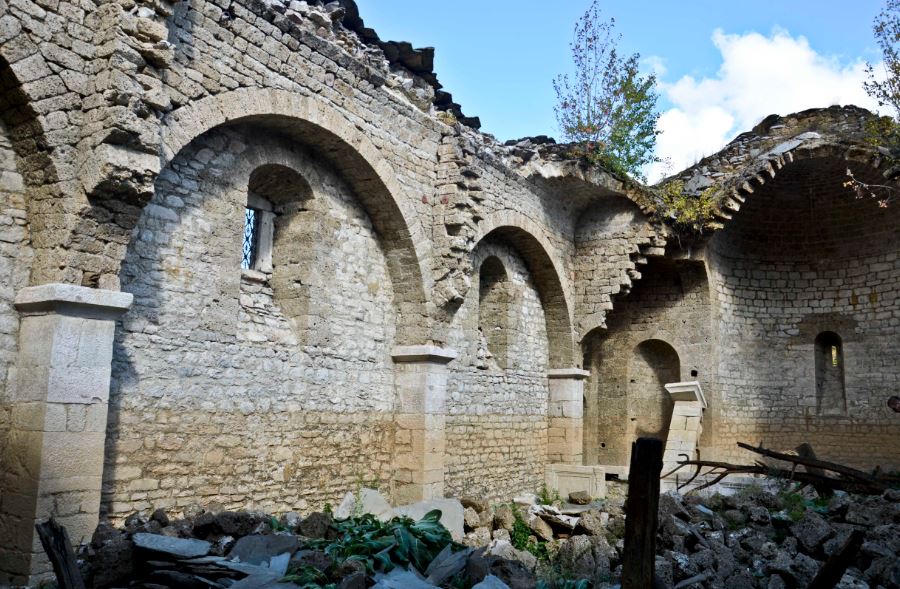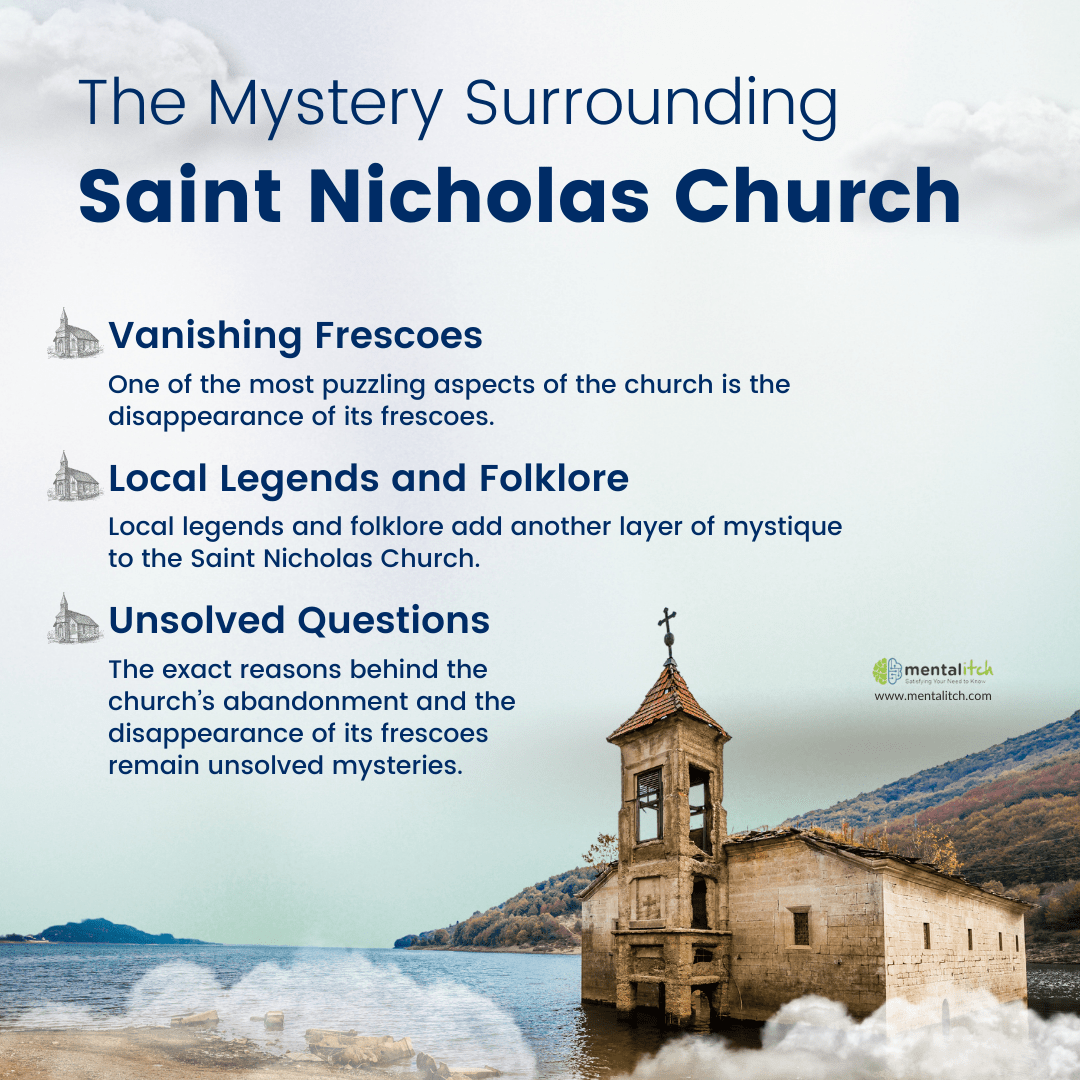Macedonia, a land steeped in history and culture, is home to a plethora of architectural marvels that reflect its rich heritage. Among these, the Saint Nicholas Church stands as a testament to the country’s deep-rooted religious traditions and its tumultuous past. Situated in a remote and abandoned village, this church holds not only historical significance but also an air of mystery that has intrigued locals and visitors alike. In this article, we will embark on a journey to learn about the abandoned Saint Nicholas Church in Macedonia, exploring its history, architecture, and the stories that shroud it in mystique.
A Glimpse into Macedonia’s Past
Before delving into the history of the Saint Nicholas Church, it is essential to understand the historical context of Macedonia itself. The Republic of North Macedonia, formerly part of Yugoslavia, is a landlocked country located in the Balkan Peninsula. It boasts a diverse and culturally rich heritage, influenced by various civilizations, including the Roman, Byzantine, Ottoman, and Slavic periods.
Macedonia’s geographical location has made it a crossroads for different cultures and religions over the centuries. Consequently, its architectural landscape is adorned with churches, monasteries, and mosques, each telling a unique story of its own.
Saint Nicholas Church: A Historical Overview
The St. Nicholas Church, also known as Св. Никола Летен in Macedonian, is an abandoned church located in Mavrovo, North Macedonia, and it currently lies beneath the waters of Mavrovo Lake. Erected in the year 1850 and adorned with paintings by Dicho Zograf, this church served as the primary place of worship for the village of Mavrovo. However, with the construction of the hydroelectric power station in Mavrovo and the creation of the artificial Mavrovo Lake, the church found itself submerged underwater. During the summer months, particularly during periods of drought, the church becomes accessible by land. This church is not just any religious structure; it is a living testament to the Byzantine architectural heritage that flourished in the region during the Middle Ages.
Architectural Marvel: Byzantine Influence
The church’s architectural style is a prime example of Byzantine influence in the region. It features a cross-in-square design, a hallmark of Byzantine church architecture, which is characterized by a central dome supported by four pillars, forming a cross-like shape. The exterior of the church is adorned with intricate frescoes, depicting religious scenes and figures from Christian history.
The use of frescoes is a significant aspect of Byzantine art and culture, and the Saint Nicholas Church’s frescoes are no exception. They offer a vivid glimpse into the religious beliefs, customs, and daily life of the people during the era in which the church was constructed.
Remarkably, despite being submerged, the church has managed to maintain its original structure. Its bell tower remains intact, even though the church’s interior has suffered extensive damage, and the roof has entirely collapsed. In 2013, The Huffington Post included this submerged church in its list of abandoned churches, drawing attention to its unique and unusual state.
Historical Timeline: From Construction to Abandonment
The exact date of the Saint Nicholas Church’s construction remains a subject of debate among historians. However, it is generally believed to have been built during the 14th century, a period when the Byzantine Empire was in decline, and the Ottoman Empire was expanding its influence in the Balkans.
For centuries, the church served as a place of worship for the local Christian community. It withstood the test of time and survived various historical upheavals, including Ottoman rule and the eventual establishment of the Kingdom of Yugoslavia in the 20th century. However, it was during the turbulent years of World War II that the church faced its most significant challenges.
In the chaos of war, the Saint Nicholas Church suffered considerable damage, with its frescoes bearing the brunt of the destruction. The village of Sopotsko itself became a ghost town, as residents fled the area to escape the horrors of war. With no congregation left to maintain it, the church began to fall into disrepair, and its precious frescoes slowly faded away.
After the war, the village remained largely abandoned, and the church continued to crumble. Over time, nature reclaimed the land, and the once-majestic Saint Nicholas Church became a haunting relic of the past.
The Mystery Surrounding Saint Nicholas Church
The abandoned Saint Nicholas Church exudes an air of mystery that has captivated the imagination of those who have ventured to this remote corner of Macedonia. The mystery surrounding the church stems from several intriguing factors.
Vanishing Frescoes
One of the most puzzling aspects of the church is the disappearance of its frescoes. The frescoes, which were once renowned for their vibrant colors and intricate detailing, have all but vanished. Visitors who explore the church’s interior are met with walls that bear the scars of time and neglect. Theories abound regarding the fate of these priceless artworks, with some speculating that they were intentionally removed or stolen during or after the war.
Local Legends and Folklore
Local legends and folklore add another layer of mystique to the Saint Nicholas Church. The village of Sopotsko, once home to a thriving community, is now eerily quiet. According to some tales, the church is haunted, and its grounds are said to be the dwelling place of restless spirits. While these stories are likely products of a vivid imagination, they contribute to the overall aura of mystery that surrounds the abandoned church.
Unsolved Questions
The exact reasons behind the church’s abandonment and the disappearance of its frescoes remain unsolved mysteries. Some historians posit that the church’s decline was a result of shifting demographics, as people moved away from rural areas to seek better opportunities in urban centers. Others believe that the damage inflicted during the war, coupled with the lack of resources for restoration, sealed the church’s fate.
Preservation Efforts and Future Prospects
Despite the challenges and mysteries that surround the Saint Nicholas Church, there is hope on the horizon. In recent years, efforts have been made to preserve and restore this historical gem. The Macedonian government, in collaboration with local organizations and international partners, has recognized the importance of safeguarding the country’s cultural heritage.
Restoration Initiatives
One significant step in the preservation of the Saint Nicholas Church has been the initiation of restoration projects. Skilled artisans and conservators have been working diligently to restore the church to its former glory. These restoration efforts not only aim to repair the physical structure but also to recover and preserve any remnants of the church’s precious frescoes.
Promotion of Cultural Tourism
The Saint Nicholas Church, despite its remote location, has the potential to become a cultural and historical tourism destination. By promoting this site to both domestic and international tourists, Macedonia can not only showcase its rich heritage but also generate revenue that can further support restoration and conservation efforts.
Educational Initiatives
Educational programs and initiatives have been established to raise awareness about the significance of the Saint Nicholas Church and the broader cultural heritage of Macedonia. These programs aim to instill a sense of pride and responsibility among the local population, encouraging them to take an active interest in preserving their heritage.
Visiting Saint Nicholas Church
If you are intrigued by the history and mystique of the abandoned Saint Nicholas Church in Macedonia and wish to pay a visit, here’s some practical information to assist you:
Location:
The Saint Nicholas Church is located in the village of Sopotsko, which is in the southwestern part of North Macedonia. The village is remote and not easily accessible by public transportation, so it is recommended to arrange for private transportation or a guided tour.
Accessibility:
The church is in a state of disrepair, so visitors should exercise caution while exploring its interior. Wear appropriate footwear and be prepared for uneven terrain.
Guided Tours:
To gain a deeper understanding of the church’s history and significance, consider booking a guided tour with a local historian or cultural expert. They can provide valuable insights and context during your visit.
Photography:
While photography is generally allowed, be respectful of the church’s fragile state and avoid using flash photography, as it can further damage the remaining frescoes.
Opening Hours:
The church does not have set opening hours, and access may be limited. It is advisable to inquire about visiting arrangements in advance or through local tourism authorities.
Conclusion
The abandoned Saint Nicholas Church in Macedonia is not just a relic of the past; it is a symbol of resilience and a testament to the enduring cultural heritage of the region. As efforts continue to restore and preserve this historical treasure, it stands as a reminder of the importance of safeguarding our shared history and the stories that lie within its walls.
Visiting the Saint Nicholas Church allows us to step back in time and immerse ourselves in the mysteries and wonders of Macedonia’s past. It is a journey of discovery, both of the physical structure itself and the narratives that have woven themselves into its walls. In the quiet solitude of this abandoned church, one can’t help but feel a connection to the generations that came before, leaving an indelible mark on this remote corner of the world.
As Macedonia strives to protect and promote its cultural heritage, the Saint Nicholas Church serves as a beacon of hope, reminding us that even in the face of neglect and decay, the stories of our ancestors can still be heard, if only we listen closely and choose to preserve their echoes for future generations to cherish.


